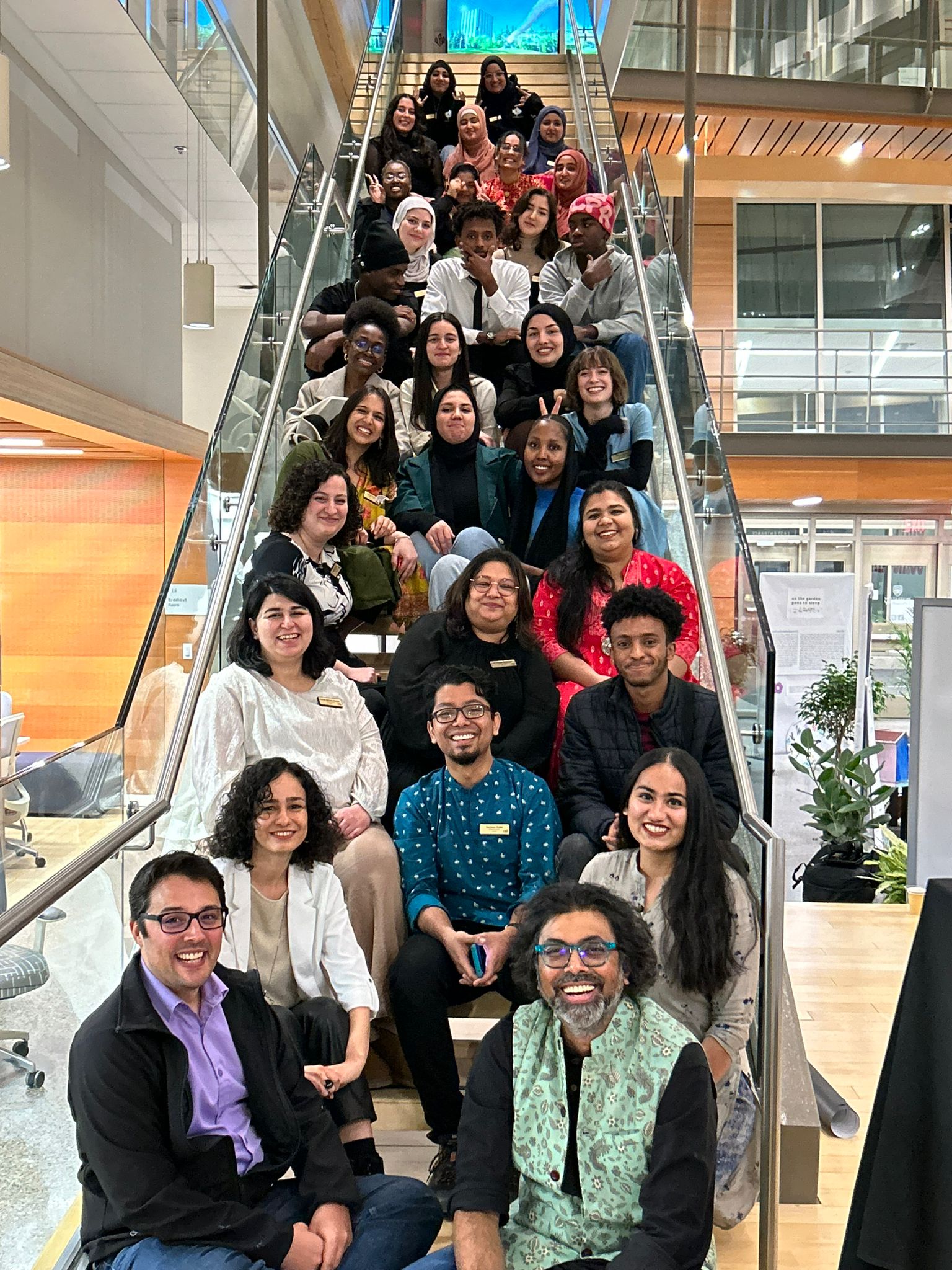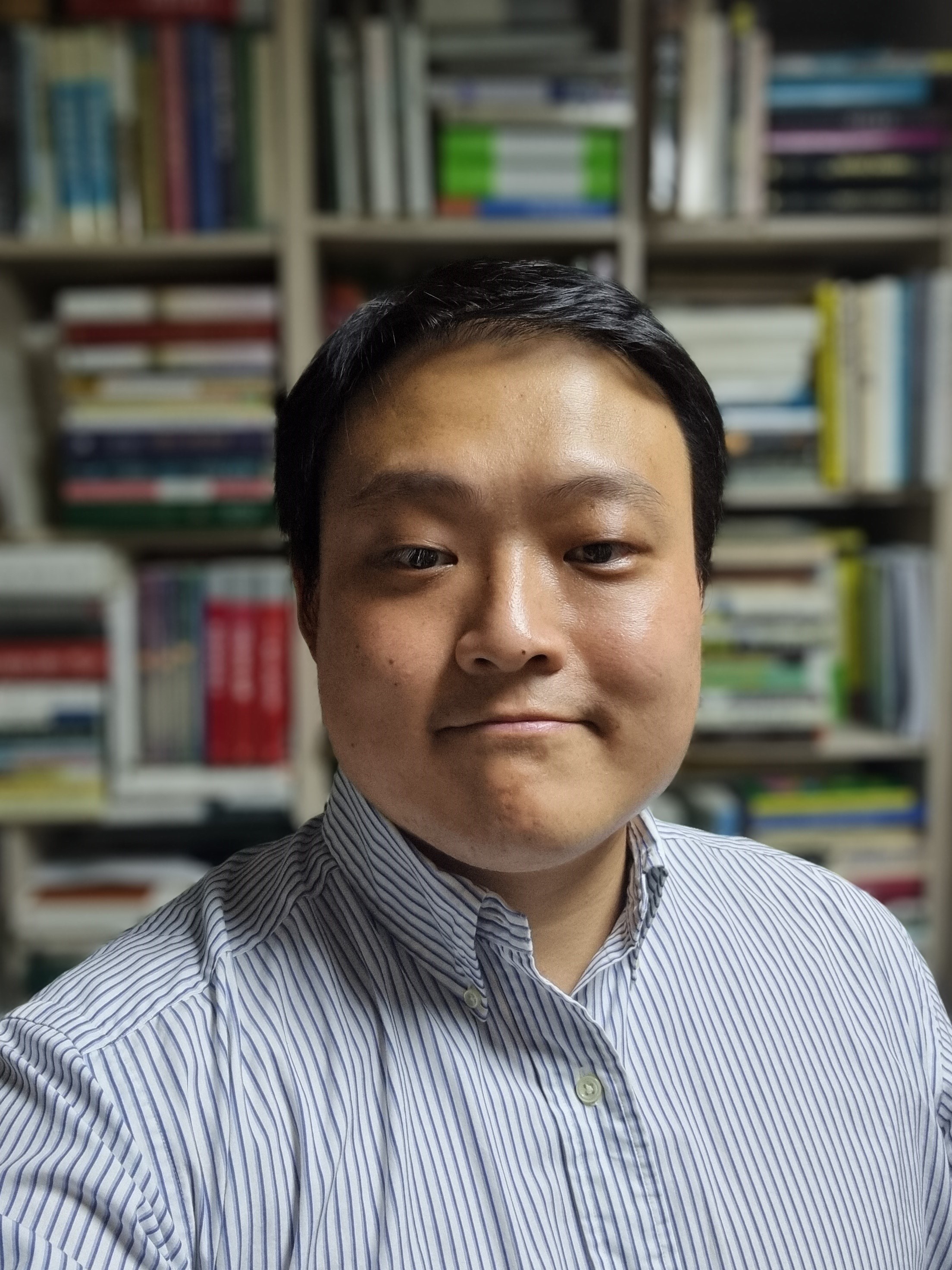Featured Abstracts
Minji Cho and Natalie J. Cholula, Portland State University
Reconceptualizing Eviction: Examining the Violent Dynamics against Tenants
Honorable Mention in the Law and Society Division’s Student Paper Competition
 |
 |
| Minji Cho | Natalie J. Cholula |
How does Galtung’s violence triangle apply to tenants’ experience with eviction? This paper situates eviction within Galtung’s Violence Triangle framework, which categorizes violence into three dimensions: direct, structural, and cultural. The researchers apply the three forms of violence to eviction to demonstrate how it harms tenants in and out of the courtroom. We conducted focus group discussions and court observations in Multnomah County, Oregon, to capture a comprehensive picture of the harm caused by eviction. Our research findings indicate that eviction laws and procedures directly harm tenants by silencing them in the courtroom and prioritizing plaintiffs. Structural and cultural violence also exists in the form of creating barriers to resources and knowledge that could prevent eviction, as well as reproducing beliefs that justify the landlord's power over tenant rights. We emphasize the importance of recognizing eviction as a violent process that occurs before tenants reach the courtroom and afterward, and highlighting the crucial role of legal counsel in protecting tenants from its damaging effects.
Santanu Dutta, Pallavi Banerjee, Pratim Sengupta, Megha Sanyal and Chetna Khandelwal, University of Calgary
Rethinking Refugee Education: Animating War and Violence as Storywork by Newcomer Youth of Color
Refugee and immigrant newcomer youths’ participation in educational spaces are often marked by a sense of loss of identity and belongingness (Abu El-Haj, 2007; Russell & Mantilla-Blanco, 2022), as premigratory histories are often taken for granted in educational trajectories of resettled refugee learners (Dryden-Peterson, 2016). Central to their sense of alienation and loss of belongingness is the lack of any legitimate space for them to share and reflect upon their stories of migration in educational spaces (Sanyal et al., 2024; YARI-Collective, 2024), with conflicting experiences of belonging in the host societies that produces the “illusion of inclusion” (Abu El-Haj & Skilton, 2017). To this end, we seek to center the narratives expressed and negotiated by newcomer youth of color as they make sense of displacement and resettlement, bearing witness to violence at many levels, while re-establishing identities in newly-found communities and institutions. In this paper, we advance a contrapuntal (Philip & Sengupta, 2021; Said, 1991) practice of co-designing cinematic animations as storywork, by illustrating how the youth revealed marginal and silenced experiences and feelings of loss, pain, and hope that underlie experiences of war and forced migration, and axiologically reframed their understanding of ongoing painful legacies of forced migration. The analytic slant of deep care (Banerjee et al., 2022) helps locate the youth’s ethical practice of caring as deeply intertwined in material and symbolic practice as they subvert dominant paradigms through valuing and amplifying lived experiences and community stories. Our work offers a further reorientation by showing how youth-led, counter-storytelling with community-focused interviewing and filmmaking can center the deep affective and often silenced worlds of pain and loss that follow communities generationally as they are cast into refugeehood and migration.
Our ongoing research project is a two-year-long co-design qualitative study with newcomer immigrant and refugee youth in Calgary, Canada, focused on re-imagining anti-racist resettlement experiences that center youths’ voices and experiences through co-creation of multimodal and proleptic artifacts of migration and refugeehood. We adopted a co-design approach nested in social design-based research methodology (Gutierrez & Jurow, 2016), grounding our design conjectures in participants’ experiences and positioning them and their communities as co-designers (Bang et al., 2016). Adopting a Southern feminist ethics of care, namely through the framework of deep care (Banerjee et al., 2022), we, the research-facilitators, attended closely to the youth stories of forced migration and transnational displacement, iteratively generating ideas of “what works” for the youth participants and then collaborating on how to re-present their narratives through creative media production. During co-design, we maintained axiological commitments to center the youths’ lives and inquiries, and positioned storytelling as a methodological slant to disrupt invisibilization of experiences.
In this paper, we analyze the cases of two groups of young women of color, hailing from war-torn, communally unsafe societies of South Asia and the Middle East, who collaborated to co-create cinematic representations to tell the stories that are meaningful to them. A group of Afghani and Syrian women utilized the techniques of stop-motion animation filmmaking to amplify the challenges of surviving war and refugeehood. The film depicted the disruption of normalcy due to the sudden outbreak of war by focusing on intimate familial details from the perspective of a youth, as well as the tribulations faced in the search for refuge. In the second case, when a young refugee woman from Pakistan found out that the Canadian school syllabus makes no mention of the violent history of partition of the Indian subcontinent in 1947, she decided to explore and tell the story with her sisters and friends. They conducted interviews in the community and documented their understanding and narratives through making a hand-drawn animated film. Our analysis shows that the youth, through re-designing their narratives and figural and gestural representations of marginal lives, bodies, and interactions via filmmaking, attended to the axiological dimensions of representing violence, both in their own lives and of lives in their communal histories, and amplified the complexities experienced by families facing war and violent displacement. Through co-creating the films which bear a dynamic interplay of life experiences and expression through storywork, the youth resisted generalized narratives of refugeehood, where their histories are often consigned to erasure and silencing. By re-telling the stories of their own lives and their community’s shared history, the youth made a critical intervention to counter racialization as new immigrants and refugees in a settler-colonial context.
While the use of audiovisual artifacts to unpack social phenomena is prevalent in the social sciences, here we show how the youth participants themselves co-create cinematic representations to further conversations around imperial and colonial roots of forced migration and displacement. The youths’ work pushes against patterned conditions of racialization and refugeehood in Canada where communal histories are erased, offering contrapuntal reorientation to center histories and memories of endarkened people (Philip & Sengupta, 2021). Our research brings together synergistic scholarship from refugee education, learning sciences, and critical gender and migration studies to further dignity-affirming, ethical-political approaches to center marginalized and refugee youth and their experiences through animated filmmaking. The youths’ explorations offer axiological re-orientations (Bang et al., 2016) challenging the reification of narratives of victimhood through co-constructing narratives by positioning themselves as “the tellers of their own stories” (Saltsman & Majidi, 2021, p.2526), thereby countering systematic erasures of subjectivities of the marginalized youth of color and center dignity and solidarity. Our work forwards an example of anti-racist community-engaged research that centers work and care of youth and their solidarities through youth-led storytelling, bridging solidarities among generations.
References:
Abu El-Haj, T. R. (2007). “I was born here, but my home, it’s not here”: Educating for democratic citizenship in an era of transnational migration and global conflict. Harvard Educational Review, 77(3), 285–316.
Banerjee, P., Khandelwal, C., & Sanyal, M. (2022). Deep care: The COVID‐19 pandemic and the work of marginal feminist organizing in India. Gender, Work & Organization.
Bang, M., Faber, L., Gurneau, J., Marin, A., & Soto, C. (2016). Community-based design research: Learning across generations and strategic transformations of institutional relations toward axiological innovations. Mind, Culture, and Activity, 23(1), 28-41.
Bang, M., & Vossoughi, S. (2016). Participatory design research and educational justice: Studying learning and relations within social change making. Cognition and Instruction, 34(3), 173–193.
Dryden-Peterson, S. (2016). Refugee Education: The Crossroads of Globalization. Educational Researcher, 45(9), 473-482.
El-Haj, T. R. A., & Skilton, E. (2017) Toward an awareness of the “colonial present” in education: Focusing on interdependence and inequity in the context of global migration. Curriculum Inquiry, 47(1), 69-79.
Gutiérrez, K. & Jurow, A. S. (2016). Social Design Experiments: Toward Equity by Design. Journal of the Learning Sciences, 25(4), 565-598.
Philip, T. M., & Sengupta, P. (2021). Theories of learning as theories of society: A contrapuntal approach to expanding disciplinary authenticity in computing. Journal of the Learning Sciences, 30(2), 330–349.
Russell, S. G., & Mantilla-Blanco, P. (2022). Belonging and not belonging: The case of newcomers in diverse US schools. American Journal of Education, 128(4), 617–645.
Said, E. (1993). Culture and imperialism. Vintage Books.
Sanyal, M., Sengupta P., Banerjee, P., Dutta S., Helvaci-Ozacar B. (2024). River crossings of our childhood: Nezuko and Yasmine dis/orient computing education. In Lindgren, R., Asino, T. I., Kyza, E. A., Looi, C. K., Keifert, D. T., & Suárez, E. (Eds.). Proceedings of the 18th International Conference of the Learning Sciences (pp. 778 - 785). Buffalo, NY: International Society of the Learning Sciences.
Saltsman, A., & Majidi, N. (2021). Storytelling in research with refugees: On the promise and politics of audibility and visibility in participatory research in contexts of forced migration. Journal of Refugee Studies, 34(3), 2522–2538.
Banerjee, P., Sengupta, P., Sanyal, M., Khandelwal, K. & Dutta, S. (2024). Co-Designing Anti-Racist Youth-Centered Programming. Annual Report, Year 2 (2023-’24). University of Calgary.
 |
 |
| Youth-focused workshops with researcher facilitation | Researchers with all the youth participants |
Anna D. Fox, The University of Chicago
Anti-Black and Blue: Neighborhood Identity and Local Racial Ideologies in Chicago’s Police Enclaves
Winner of the Crime and Justice Division’s Student Paper Competition
 |
||
Advocates of police reform portray municipal residency requirements as a countermeasure to racialized police violence, as they force police officers to live among those whom they ostensibly serve. Yet opponents point to Chicago, the largest city in the United States to enforce this policy, suggesting that police-dense neighborhoods in fact facilitate increased racial tension in this context. This mixed-methods study explores how novel, anti-Black racial ideologies emerge in Chicago’s police neighborhoods. Using geospatial data, I first empirically establish the existence and prevalence of police enclaves, which have almost no Black residents. Then, using in-depth interviews with members of 60 police households, I illustrate these neighborhoods’ role in generating a neighborhood-level, expansive police identity. This identity shapes a local racial order, where all neighborhood residents are perceived as susceptible to anti-police violence, while all Black Chicagoans are cast as existential threats, justifying neighborhood practices of anti-Black racism and informal forms of policing.
Ami Mariko Hood Frost, The University of Oklahoma
Yes, Dear; Yes, Queer: Division of Household Labor among Queer Couples
Honorable Mention in the Family Division’s Student Paper Competition
Although sociological research on housework has long been a fruitful area of study, how LGBTQ couples divide housework remains a distinctly understudied topic. Using data from the National Couples Health and Time Study, this study examines over 1,000 LGBTQ individuals’ perceptions of the division of household labor with their partners. When compared to heterosexual couples, those in queer relationships tend to report similar levels of satisfaction with the division of household labor. Alternatively, limiting the sample to only queer couples shows that two couple types (cisgender men partnered with non-binary individuals, and cisgender women partnered with trans men) report significantly lower satisfaction with the division of labor in their homes. Using a framework of intentional striving, these results indicate that negotiating the ordinary tasks of life requires more than simply desiring equality.
Katherine Kafonek, Stockton University, Joshua H. Stout, Illinois State University, Andrew C. Gray, Ball State University, Michael Thompson, Stockton University and Jennifer M. Ayerza, George Mason University
The Devil and God Are Raging Inside’: Exploring Gender-based Violence in the Alternative/Indie Music Scene Subculture
In the #MeToo era, survivors of gender-based violence (GBV) are more empowered to share their stories through social media. Historically, more media attention has been given towards cases of GBV that has emerged in popular music culture (Herd, 2015). However, until recently, less attention has been given to GBV in alternative/indie rock music genres. In 2017, allegations of sexual misconduct were made against Jesse Lacey – vocalist of the alternative/indie band Brand New – leading to a cascade of GBV survivors sharing their experiences of being victimized by other bands and band members within the “pop-punk” music scene. Other scholars have noted that there is a lack of academic research on the extent of GBV in this specific music scene (Coleman, 2017; Strong & Rush, 2018). Our exploratory analysis is framed around two overarching research questions: first, what is the extent of GBV within this genre; second, how does the unique subculture within this music scene impact GBV? Through examining allegations by victims and responses of the accused across 90 cases, our findings reveal that the accused commonly employs techniques of neutralization to deny responsibility and injury following an accusation. Within these responses, the accused frequently discusses elements of the subculture itself as creating an environment in which GBV is commonplace. Findings illuminate the role of rape culture in normalizing and enabling band members’ misconduct.
 |
 |
 |
||
|
Katherine (Kate) Kafonek |
Michael Thompson | Jennifer M. Ayerza |
Melissa Luong and Samantha B. Myers-Miller, Vanderbilt University
Alternative Foodways in Nashville: Complicating Food Desert Mapping
.jpg) |
|
|
Melissa Luong |
Spatial conceptualizations of food insecurity often rely on the imagery of a “food desert”. The food desert metaphor has been widely used to identify neighborhoods with little or no access to healthy food. While this framework has strengths, the term “food desert” utilizes a deficit lens to portray communities as barren. The use of food desert implies that supposedly devoid neighborhood food environments occur naturally rather than as consequences of historical and contemporary legacies of discriminatory policies. Scholars and food justice advocates have urged researchers to retire the food desert metaphor and replace it with an intersectional understanding of food access, through food apartheid, recentering the role of structural, spatial inequity built into the food landscape. In this paper, we examine the presence and spatial composition of alternative foodways (non-retail food outlets such as food pantries, food banks, community fridges, community gardens, and emergency meal providers) that serve thousands of Nashville residents weekly but are omitted in traditional metrics for food access centers. We draw from critical geography and mapping to utilize counter-mapping to begin to understand the ways in which communities in “food deserts” access food through alternative foodways. By compiling an alternative foodway database, designing indicators that enhance traditional definitions of food access, and mapping our data, we find that alternative foodways play an important role in addressing food insecurity and the conditions of food apartheid in Nashville, TN. Through counter-mapping alternative foodways, we also find that traditional definitions of food deserts are inadequate in fully capturing the neighborhood food environment. Neighborhood food environments are complex and varied, and monolithic conceptualizations of neighborhood foodscapes in Nashville as food deserts do not consider the ways in which non-retail food distributors and mutual aid efforts might supplement food access.
Keywords: alternative food ways, food insecurity, food deserts, food apartheid, counter-mapping
Dujin Park, Chungnam National University; Suh young Choi, Lanu Kim, and June Jeon, Korea Advanced Institute of Science & Technology
Artificial Intelligence and the New Divide: Perceptions, Preparedness, and the Future of Labor Market Inequality
The rapid growth of artificial intelligence technology raises challenging questions on the future of labor market inequality. Existing studies emphasize AI’s potential impacts on both White Collar and Blue Collar jobs; however, there exists a considerable gap in studying how various workers are differently motivated to prepare for this forthcoming shock in the labor market. Combining statistical and qualitative analyses, this article explores the various laborers’ perceptions, usages, and overall preparedness for artificial intelligence technology. For this purpose, we conducted a national scale survey (n=1,081) in South Korea and followed up with in-depth interviews (n=45). Utilizing mixed methods, this paper argues that workers’ unequal preparedness for AI is attributable to their educational backgrounds, and their subjective perceptions of technology and labor mediate this relationship. In-depth interviews disclose that less-educated workers tend to overestimate their career autonomy and underestimate AI’s capabilities, often characterizing themselves as exceptional to be replaced by AI. They are relatively reluctant to try even casual AI services because they build a sense of indifference and self-negation regarding AI. As a result, highly educated workers are more prone to pursue professional AI training, while less-educated workers prioritize field-based experience in workplaces. This indicates that social policies aimed at mitigating AI's unequal impacts should consider not only replaceable skill sets and AI functionalities but also the symbolic and subjective dimensions of social actors facing emerging technologies.
 |
 |
 |
 |
|||
| Dujin Park | Suhyoung Choi | Lanu Kim | June Jeon |
Hannah Schwendeman, University of Minnesota
Aging and Dying Behind Bars in the Era of U.S. Mass Incarceration
 |
|
The U.S. prison population is rapidly aging as an unprecedented number of older adults live and die behind bars as a consequence of tough-on-crime policies (Widra, 2023; Nellis 2023). Meanwhile, the U.S. government has not accurately collected data on deaths in the U.S. criminal-legal system since 2019 (Armstrong 2022; Carson 2021). Following a 10-month bipartisan investigation, the U.S. Senate concluded that the Department of Justice “is failing to determine who is dying behind bars, where they are dying, and why they are dying — and therefore failing to determine where and which interventions are most urgently needed to save lives” (Ossoff et al. 2022). My dissertation intervenes to understand how these two simultaneous social problems are converging: (1) the U.S. prison population is aging and dying at an increasing rate and (2) the U.S. government is failing to account for these deaths. Using an organizational analysis, I study the institutional processing of death in U.S. state prisons. I ask: How are U.S. state prisons responding to the crisis of aging and dying prisoners during the period of late mass incarceration (2001-2019)? Drawing from sociology of punishment, sociolegal studies, and theories of necropolitics, I investigate how state prisons are an expanding site of literal and social death (Friedman 2021; Patterson 1982). In doing so, I contribute to both scholarly and policy knowledge to investigate the limits and possibilities of ending mass incarceration.
Armstrong, Andrea. 2022. Testimony of Andrea Armstrong “Uncounted Deaths in America’s Prisons and Jails: How the Department of Justice Failed to Implement the Death in Custody Reporting Act.” U.S. Senate Permanent Subcommittee on Investigations Homeland Security and Governmental Affairs Committee.
Carson, Elizabeth. 2021. Report Comparing Bureau of Justice Statistics and Bureau of Justice Assistance Mortality Death Collections. US Department of Justice Bureau of Justice Statistics.
Friedman, Brittany. 2021. “Toward a Critical Race Theory of Prison Order in the Wake of COVID-19 and Its Afterlives: When Disaster Collides with Institutional Death by Design.” Sociological Perspectives 07311214211005485. doi: 10.1177/07311214211005485.
Nellis, Ashley. 2023. Mass Incarceration Trends. The Sentencing Project.
Ossoff, Jon, Ron Johnson, Douglas Pasternak, and Caitlin Warner. 2022. Staff Report: Uncounted Deaths in America’s Prisons & Jails: How the Department of Justice Failed to Implement the Death in Custody Reporting Act. U.S. Senate Permanent Subcommittee on Investigations Homeland Security and Governmental Affairs Committee.
Patterson, Orlando. 1982. Slavery and Social Death: A Comparative Study. Cambridge, Mass.: Harvard University Press.
Widra, Emily. 2023. “The Aging Prison Population: Causes, Costs, and Consequences.” Prison Policy Initiative. Retrieved September 10, 2023 (https://www.prisonpolicy.org/blog/2023/08/02/aging/).
Korey Tillman, Northeastern University
Punitive Inertia: Anti-blackness and the Policing of Motion
 |
|
Theorizations of the U.S. carceral state often treat anti-Blackness as the disproportionate suffering of Black individuals across a range of measures instead of a distinct form of racial oppression that needs investigation. This article examines how anti-Blackness shapes the formal and informal ways that Black individuals are policed in their everyday lives. Drawing on 23 interviews with adults who identify as Black across the U.S., I find that their spatial trajectories are altered by mundane forms of policing that extend beyond the criminal legal system. I offer punitive inertia to capture how Black spatial trajectories are policed and resisted.In physics, inertia describes how an object resists a force attempting to change its spatial trajectory. Similarly, punitive inertia describes how policing—underpinned by a history of racial slavery and colonialism—is the force Black individuals resist in attempts to control their own spatial trajectories. I argue that Black bodies are moving through an anti-Black modernity generating incessant moments of punitive inertia that call into question our very notions of Human and the Social as coherent categories. I conclude with a call for scholars to contend with anti-Blackness in further examinations of policing.
Jonathan Tollefson, Brown University
Environmental Risk and the Reorganization of Urban Inequality in the Late 19th and Early 20th Century
Winner of the Environment and Technology Division’s Student Paper Competition
 |
||
This research investigates the role of urban environmental hazards during the initial formation of neighborhood-scale racial segregation in the late 19th and early 20th centuries. Neighborhood-scale segregation is a relatively recent feature of U.S. cities: Racial segregation was primarily a street-level phenomenon in the late 1800s, and it wasn’t until the first decades of the 20th century that the color line grew to encompass entire neighborhoods. Research on urban environmental inequality, however, is left-censored to about the 1970's, primarily due to a lack of comprehensive environmental site data prior to federal environmental monitoring requirements. In response, this paper leverages an original computational pipeline to identify and geolocate sites related to a particularly noxious source of early industrial pollution. These sites are paired with geolocated historic census data to measure the social stratification of environmental exposure in six US cities over the 1880 to 1930 period. Results reveal that proximity to environmental hazards emerges as a key variable in the reorganization of urban space, as the iterative movement of people and industry across the city produced new patterns of environmental exposure over time - providing the first empirical assessment of the shifting social stratification of environmental risk during this key moment in the spatial transformation of urban inequality.
